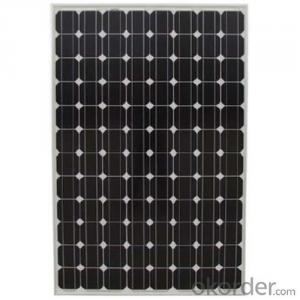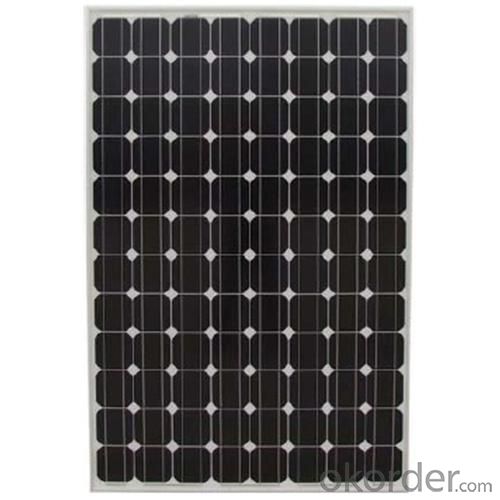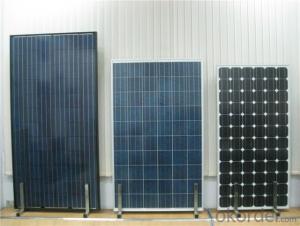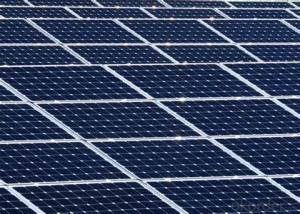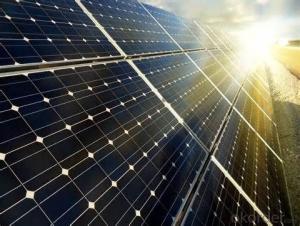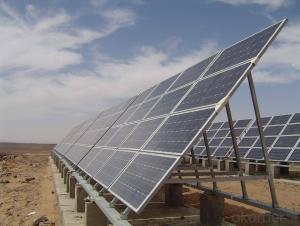Made in America 20w Poly Solar Module with High Efficiency
- Loading Port:
- Tianjin
- Payment Terms:
- TT OR LC
- Min Order Qty:
- 1 watt
- Supply Capability:
- 100000 watt/month
OKorder Service Pledge
OKorder Financial Service
You Might Also Like
Specification
Product Description:
1.Structure of Solar Module Description
CNBM Solar's photovoltaic module is designed for designed for large electrical power requirement. It is the optimal choice for both on-grid and off-grid power systems. CNBM Solar offers high performance of power per square foot of solar array.
2.Main Features of the Solar Module
Solar Cell: High efficency crystalline solar cell. Even if under the weak light, the solar module can produce maximum power output.
Tempered glass: Anti-reflecting coating and high transmission rate glass increase the power output and mechanical strength of solar module.
EVA and TPT: Using high quality EVA and TPT to prevent destroying and water.
Strong aluminum frames to strengthen the load hold and to stand against high wind.
Junction box: Multi function junction box with water proof.
Long lifetime: ≥25 years; Less power decrease.
Good performance of preventing from atrocious weather such as wind and hails.
Resisting moisture and etching effectively, not effected by geology.
The certificate issued by international authority: UL, TUV, IEC, VDE, CE.
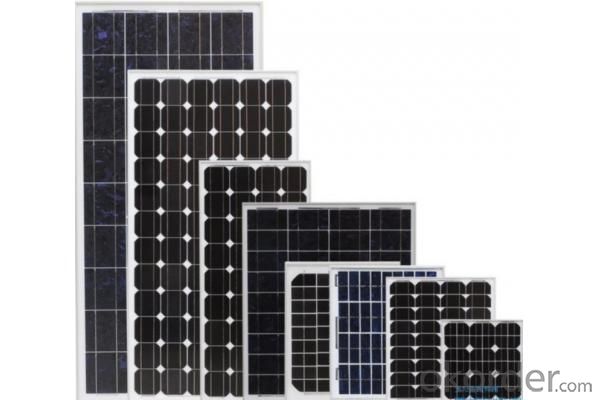
Solar panel working process
In addition to being the ultimate source of all life on earth, the sun is an infinitely renewable, completely pollution-free source of electricity. Instead of burning fossil fuels dug up from the ground in a big power plant – a very 19th century, industrial age approach, when you think about it – solar panels convert sunlight directly into electricity, with no harmful emissions.
The basic unit of a solar panel is a solar cell, which usually consists of one or two layers of silicon-based semiconductor wafers. When struck by the photons in sunlight, the solar cell generates an electrical charge due to the "photovoltaic effect" – which is a pretty good name, since it produces voltage from photons. The flow of these electrons moves in a steady electrical current from one side of the cell to the other.
Dozens of these PV cells are packaged together into solar modules, which in turn are packaged into solar panels that are mounted on a rooftop and arranged to maximize their hours of exposure to direct sunlight. Because the electricity generated by all those solar cells is direct current (DC), it is then sent to an inverter that transforms the power into the same alternating current (AC) used by the appliances in your home and the local utility electricity distribution grid. Increasingly, these inverters are getting "smart," providing data monitoring for solar installation performance and other grid integration services.
- Q: I am writing a lab for school and I need to know who invented solar panels? Any help would be great.
- Many people think that solar power is a new concept. That couldn’t be farther from the truth. Harnessing power from the sun has been dated back to ancient civilizations. The below link is a timeline researched by the Department of Energy that outlines the major historical milestones of solar power.
- Q: I had installed over the summer a solar panel system on my house. Hers some infofor you: I live in MOThe system cost 25K (Rounded numbers)The Rebate from the utility company was about 0KThe expected tax rebate will be about 5KI have a home office from which I work and is 5% of my homes sq footage. My question is though I am getting a basic tax rebate, should I be able to claim part of this off as an expense for my home office?It seams logical since I used to deduct part of my electric bill and I there for should be able to write off part of this. I am, after all using electricity and getting a bill from the utility that is higher than it would be if I didn't have the office2. If so which amount should it be? The full 25K or something after the rebates.
- Pretty much stop existing.. Global Warming is Earth's way of pretty much saying..NEXT...We arent causing global warning its time for a change and the earth is doing it.. Mt St helens and also Mt Pinatubo put out more green house gases than anything humans did in history ..Its just a normal trend..Getting ready for the coming of another species.. just like it did with us and we survived ..that should be the question here ,how to survive the earths changes not what we can do about it. There is nothing we can do that will make a difference..Told Decaprio the same thing..
- Q: Can solar panels be installed on schools or educational campuses?
- Yes, solar panels can be installed on schools or educational campuses. Installing solar panels on educational institutions not only helps to reduce their carbon footprint but also serves as a practical learning tool for students, showcasing the benefits of renewable energy. Additionally, solar panels can provide cost savings on electricity bills, allowing schools to allocate more resources towards education.
- Q: The battery is 9ah and the solar panel is 20w
- Yes, certainly. So long as the solar panel's voltage exceeds the voltage of the battery (which is probably going, certainly if it can be a discharged battery, which is lower than 2 volts), then it will recharge the battery. Additionally, a 2 V solar panel can produce bigger than 2 volts. Nevertheless, the rate of charging is more likely to be depdendent on the availabilty of daylight. And of course, the better the capcity of the battery, the longer it takes to cost.
- Q: Can solar panels be installed on electric fences?
- Yes, solar panels can be installed on electric fences. They provide a sustainable and cost-effective way to power the electric fencing system, eliminating the need for a direct electrical connection or reliance on traditional power sources. Solar panels can easily be integrated into the design of an electric fence, enabling it to operate efficiently and independently in remote or off-grid areas.
- Q: What are the supplies needed in a solar panel field, i know there are the panels. But what about batteries, and converters. Possibly other things, and how many will i need, for a certain amount of panels?
- Short answer.. alot. A solar field is a big undertaking, and you'd be better off going with a solar consultant. I found this site and would recommend their services as they offer consulting, and are pretty big into solar (or atleast in my area..)
- Q: How do you make solar panels and do you need a lot of them to make electricity?
- Have okorder . It could obviously explain everybody!
- Q: Can solar panels be installed on a restaurant or food service establishment?
- Yes, solar panels can be installed on a restaurant or food service establishment. In fact, many businesses in the food industry are turning to solar power as a sustainable and cost-effective energy solution. Solar panels can be mounted on the roof or other suitable areas of the building to generate clean electricity, reducing the establishment's reliance on traditional power sources and lowering energy costs.
- Q: Are there any risks associated with solar panel installation?
- Yes, there are a few risks associated with solar panel installation. These include the potential for damage to the roof during installation, the risk of electrical shock if not installed properly, and the possibility of fire hazards if the electrical system is not correctly designed or maintained. However, by hiring professional installers and following safety guidelines, these risks can be minimized.
Send your message to us
Made in America 20w Poly Solar Module with High Efficiency
- Loading Port:
- Tianjin
- Payment Terms:
- TT OR LC
- Min Order Qty:
- 1 watt
- Supply Capability:
- 100000 watt/month
OKorder Service Pledge
OKorder Financial Service
Similar products
Hot products
Hot Searches
Related keywords
